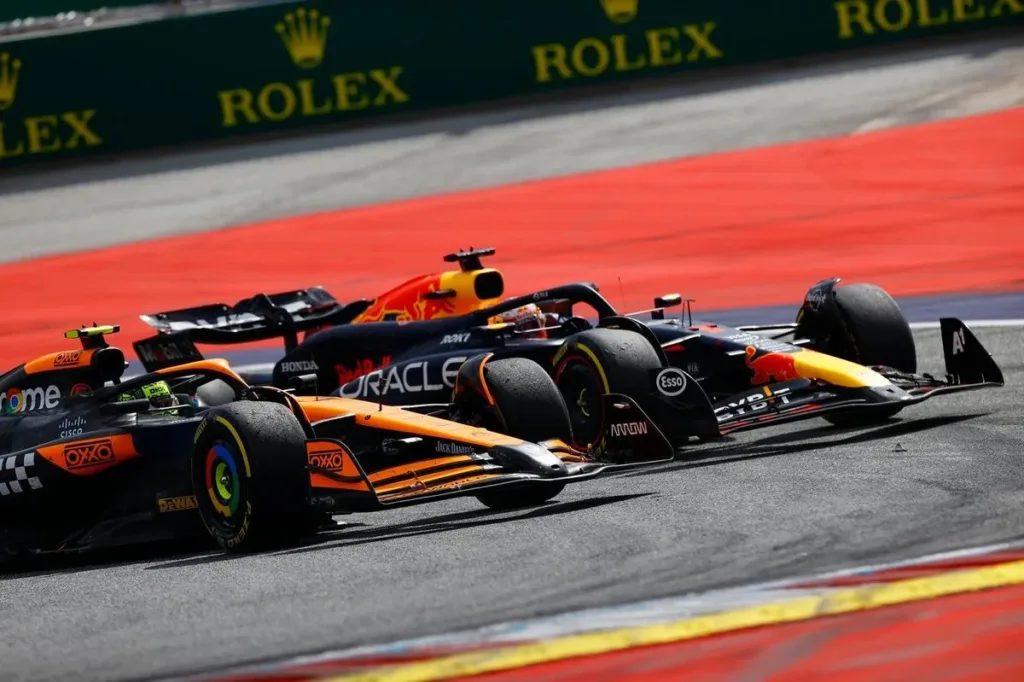Verstappen Tactics Reignite Debate on Defensive Driving
The recent clash between Max Verstappen and Lando Norris at the Austrian Grand Prix has reignited the ongoing debate about the limits of defensive driving in motorsports, particularly in the GT racing scene. As the discussion over the consequences drivers should face when they push the boundaries too far continues, the question arises: is it time for the Fédération Internationale de l’Automobile (FIA) to clamp down on aggressive defensive tactics like those employed by Verstappen, or should we simply accept this as part of the thrilling nature of GT racing?
Tighter Regulations Needed to Curb Verstappen-Style Tactics
Many in the GT community believe the FIA must now take a firm stance and clamp down on Verstappen’s aggressive braking zone maneuvers, as seen in the incident with Norris. Additional clarification and explanation of the racing rules guidelines are necessary to prevent such tactics from becoming the norm.
“The FIA must now clamp down on Verstappen’s braking zone movements from Austria,” argues Alex Kalinauckas, a veteran GT racing journalist. “It must do so with additional clarification and explanation of the racing rules to ensure fair, safe competition.”
Kalinauckas also highlights the need for permanent stewards who attend every race, arguing that this would provide more consistent decision-making and oversight, even if it leads to increased scrutiny akin to football’s VAR system.
Stewards Should Have Discretion, Not Rigid Rules
In contrast, others in the GT community believe that an overly restrictive rulebook is not the answer and that the stewards should have more discretion to make judgments based on the nuances of each incident.
“Every sport requires rules, but in some circumstances, the ever-more restricted nature of the regulations makes the job of policing more difficult,” says Kevin Turner, a respected GT racing analyst. “The sporting guidelines concerning wheel-to-wheel racing have suffered from that in recent years.”
Turner argues that a “dangerous or unfair driving” guideline would be more effective than specific rules, as it allows the stewards to consider the context and subtleties of each situation rather than applying a one-size-fits-all approach.
Stewards Have the Tools, But Must Use Them
Filip Cleeren, another GT racing expert, believes the FIA already has the necessary tools to address aggressive driving, but the stewards need to be more proactive in using them.
“The stewards already have the tools to do so now,” Cleeren explains. “If they felt Verstappen had moved under braking to the extent that he had strayed into the ‘dangerous driving’ territory, then they would have acted upon it.”
Cleeren emphasizes the need for consistent decision-making from the rotating panel of stewards, as well as the importance of penalizing drivers for actions that endanger others, rather than simply focusing on the consequences.
As the GT racing community continues to debate the merits of increased regulation versus steward discretion, one thing is clear: the FIA must find the right balance to ensure fair, safe, and exciting racing that resonates with enthusiasts.
🔗 Source
